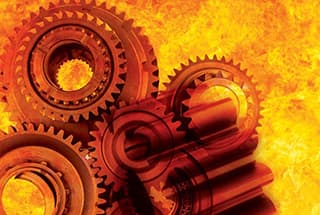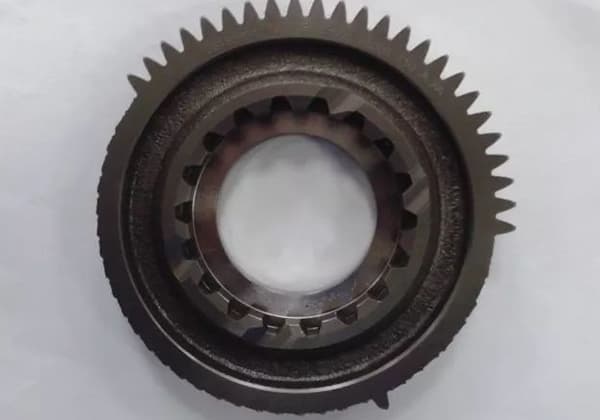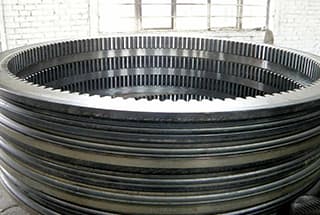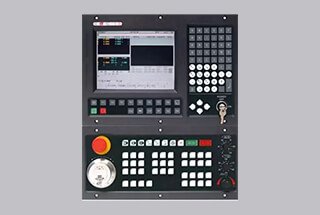
Why do some gears fail despite precise manufacturing? This article dives into the common defects in gear carburizing, exploring issues like over-carburization, shallow hardening, and uneven case hardening. You’ll learn about the causes behind these problems and effective preventive measures, ensuring optimal gear performance and longevity. Understanding these defects and their solutions will help you enhance the durability and reliability of gears in various applications.

Improper treatment of carburized gears can lead to excessive surface carburization, resulting in blocky and net-like carbides on the surface.
This reduces the gear’s ability to deform plastically during use, weakens its impact resistance, decreases the bending fatigue performance at the tooth root, makes the tooth tip brittle, and prone to chipping.
After quenching, carburized gears are susceptible to cracking during grinding operations.
(1) When gears are carburized in solid media, the carbon potential inside the carburizing box is too high and cannot be arbitrarily adjusted.
Therefore, the higher the carburizing temperature and the longer the time, the greater the degree of over-carburization on the surface.
Particularly for carburizing steels containing strong carbide-forming elements like Cr and Mo, carbon diffusion is slower, leading to higher carbon concentration on the surface of the carburized gear layer.
This results in an over-carburized layer, which, when cooled, forms a net-like distribution from the precipitation of carburized bodies from the austenite grain boundaries.
(2) During carburization in a gaseous medium, if the carbon potential inside the carburizing furnace is too high and the strong carburization time is too long, over-carburization of the gear surface can also occur.
(1) During solid carburizing, to prevent excessive carburization due to high carbon potential, use a lower carburizing temperature or a weaker carburizing agent.
(2) During gas carburizing, to prevent excessive surface carburization, arrange a diffusion phase after carburizing. The duration of the intense carburizing and diffusion phases should be determined according to the heat-treatment process.
(3) For gears with excessive surface carburization, diffuse them in a low-carbon potential carburizing furnace, or quench them after the carbide spheroidizing annealing treatment.

The surface hardness of carburized gears is shallow, causing not only a reduction in the resistance of the hardened surface layer to peeling, but also a decrease in service life.
(1) During the carburization process, the carburization time is too short, the carburization temperature is too low, and the carburization layer is shallow.
The uneven distribution of the effective heating zone temperature in the furnace, improper carbon potential control during the strong carburization and diffusion stages, failure to clean oil stains on the gears before loading into the furnace, and excessive loading volume leaving too small gaps, all contribute to the shallow hardening layer of carburized gears.
(2) The selected gear steel material and the poor hardenability, coupled with insufficient cooling performance of the quenching medium, result in a shallow hardening layer after normal carburizing quenching.
(1) Choose steel with appropriate hardenability as the material for carburized gears, strictly control the quality of gear steel, and perform quality standard checks on the steel before it enters the factory.
(2) Strictly control the surface quality of the gears before carburizing, the loading volume in the furnace, the temperature in the furnace, the carbon potential atmosphere in the furnace, the time of intense carburization and diffusion, the quenching temperature after carburizing, the cooling medium, etc.
(3) Gears with insufficient carburization should undergo supplemental carburizing.
The uneven depth of the case-hardened layer on the gear surface results in discontinuous performance across different areas. It causes initial damage in weaker zones, subsequently leading to the overall failure of the gear and severely affecting its service life.
(1) During solid carburizing, significant temperature differences exist within the carburizing box, and uneven distribution of the carburizing agent leads to large disparities in the carburizing depth.
Moreover, the size of the carburizing box, load volume, loading method, heating rate, and the low thermal conductivity of the carburizing agent’s charcoal will all impact the depth of the carburized layer.
(2) During gas carburizing, uneven furnace temperatures and poor furnace atmosphere circulation, uncleaned oil stains on the gear prior to loading, and carbon black deposits on the gear surface can all contribute to an uneven carburizing layer depth.
(1) Gears that are mass-produced should avoid solid carburizing as much as possible. If solid carburizing must be conducted, strict adherence to operational procedures is necessary: appropriate loading volumes, and thorough mixing of the carburizing agent and charcoal.
The carburizing box should be placed in the middle of the furnace where the temperature is even, and the box’s position should be adjusted appropriately during the carburizing process.
(2) During gas carburizing, ensure sufficient circulation of the furnace atmosphere, uniform furnace temperature, removal of oil stains on the gear surface, and appropriate loading volumes.
The carburizing furnace should be well-sealed, any leaky muffle containers should be replaced promptly, and regular maintenance of the carburizing furnace is necessary.
The reduced surface hardness of carburized gears can lead to reduced wear resistance and fatigue resistance, adversely affecting the gear’s friction resistance and wear resistance properties.
(1) Surface decarburization, with a decarburization layer found in metallographic examination, results from insufficient protection during annealing or quenching after carburization.
(2) Slow cooling speed is evident in microscopic examination, where the surface structure is sorbite, not martensite.
In metallographic observation, needle-like martensite is clearly corrosion-resistant, whereas sorbite appears darker (more susceptible to corrosion). There is a significant difference when the hardness is checked with a microhardness tester.
(3) Excessive amounts of residual austenite on the surface after quenching are caused by the carburization temperature of gears and the quenching temperature being too high.
(4) Poor hardenability of the gear material and insufficient cooling capacity of the quenching medium.
(5) High tempering temperature after quenching and excessive duration of insulation.
1. For gears with low surface carbon content, implement appropriate carburizing treatment.
2. Select materials with suitable hardenability and cooling mediums with appropriate cooling capabilities for quenching.
3. Take preliminary steps to reduce the residual austenite volume after quenching.
For carburized gears with excessive residual austenite, conduct a high-temperature tempering at 650-670°C for more than 3 hours, enabling partial precipitation of alloy carbides, thereby reducing the stability of austenite during re-heating quenching and promoting the transformation of austenite to martensite.
4. Carburizing and re-heating quenching of gears should be carried out under a protective atmosphere.
Gears exhibiting oxidation should have their oxide layers removed, then undergo surface carburizing before quenching.
5. If the gear surface hardness is too low due to high tempering temperatures, re-quench the gear, selecting an appropriate temperature for tempering.
The core of the carburized gear requires a certain level of hardness. If the hardness is too low, the yield point of the gear material decreases, which could lead to plastic deformation within the core.
This in turn reduces the resistance of the surface-hardened layer to spalling and weakens the bending fatigue performance at the gear root.
(1) Poor hardenability of the gear material, inferior gear quality, and severe banding structure within the steel.
(2) Prior to direct quenching after carburization, the pre-cooling temperature is too low, or the quenching temperature is insufficient during re-quenching after carburization.
(3) The cooling speed is not sufficient. Upon metallographic examination, the structure is not low-carbon martensite, but instead, it’s sorbite.
(4) There’s an abundance of undissolved ferrite in the core, which is caused by a too low heating temperature or inadequate heating time.
(1) Utilize a cooling medium with superior cooling properties for quenching to achieve a low-carbon martensitic structure in the core.
(2) Choose the appropriate quenching temperature and heating duration to obtain a uniform austenitic structure in the core, allowing the formation of a martensitic structure after quenching.
(3) Select steel with good hardenability and quality as the material for carburizing gears.








